Thirteenth Soviet ace. Twice Hero Alelukhin gave aviation half a century
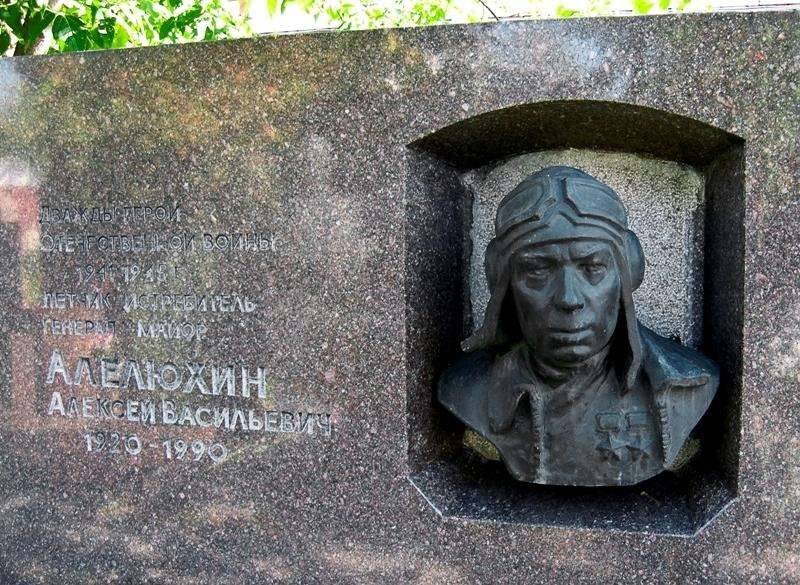
Glorious victories of the pilot Alelukhin
From September 26 to November 5 1943 of the year, the Red Army carried out the Melitopol operation. The troops of the Southern Front, having completed the Donbass operation, moved to the city of Melitopol, continuing to crowd out the enemy. The troops of the Southern Front were commanded by Army General Fedor Ivanovich Tolbukhin, under whose leadership up to 555 thousands of soldiers and officers marched. In the sky over Ukraine, they fought with the enemy and carried out various combat missions in the framework of the Melitopol operation over 1100 aircraft.
During the Melitopol operation, the nine, commanded by a young officer Aleksey Alelyukhin, managed to defeat the enemy bombers that followed under the cover of fighters over the 50. Soviet pilots were able to disrupt the battle formation of the enemy. This was not the first and, fortunately, far from the last victory of Alexei Alelyukhin.
1 October 1943 year Alelukhin, acting in a group, shot down three enemy aircraft Xe-111. Prior to this, Alelukhin successfully fought in the sky over Stalingrad, Rostov, Donbass. One of the most courageous and skillful Soviet pilots, Alelukhin in the autumn of the 1943 of the year flew on the P-39 AeroCobra fighter, mastering this American aircraft to perfection. In the sky above Stalingrad, he shot down Me-109 personally and Yu-88 as part of the group. On 30 of July 1942 of the year Alelukhin was injured in the leg and back, but this did not stop him from getting back in line and continuing to beat the enemy.
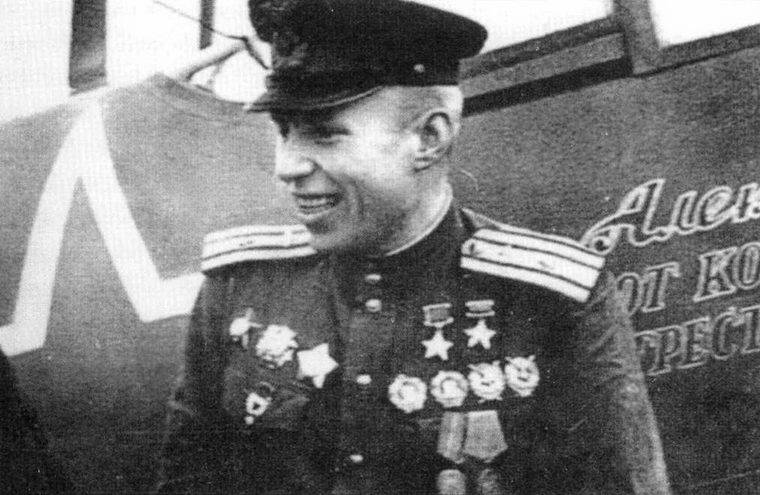
Aces regiment
9th Guards Fighter aviation the regiment in which Alelukhin served was one of the most productive Soviet aviation units. It was in this regiment that the famous ace Amet-Khan Sultan, the famous pilots Vladimir Lavrinenkov and Pavel Golovachev, also served. 558 aircraft during the war years - this result put the 9th Guards Fighter Aviation Regiment in seventh place in terms of the number of enemy aircraft shot down in Soviet aviation.
The fighter aviation regiment was formed before the war, on 13 of September 1939 of the year at the Mokraya station in Zaporozhye, on the basis of the 6 th fighter aviation squadron of the 1 th heavy bombardment aviation regiment of the 3 th special aviation army. After the regiment was finally equipped with flight personnel and services, it was transferred to Odessa and included in the 21 Air Division. At the time of the German attack on the Soviet Union, the regiment included 70 I-16 and 5 MiG-3 aircraft. In November 1942, the regiment received Yak-1 aircraft, and in August 1943, the P-39 Aero Cobra. From the summer of 1944 until the end of the war, regiment pilots flew La-7 aircraft.
On July 23 of 1942 of the year, the regiment was included in the 8 Air Army, and then, on the initiative of the army commander, Major General Timofey Timofeevich Khryukin, he was transformed into an "aces regiment." The most productive fighter pilots of the country were transferred to the unit - Mikhail Baranov, Vladimir Lavrinenkov, Amet-Khan Sultan. Served in the regiment and women - pilots Lydia Litvyak and Ekaterina Budanova.
One of the four pilots who received two Golden Stars of the Hero of the Soviet Union, who served in the regiment, was Aleksey Alelyukhin. He began his service in the 69th Fighter Aviation Regiment before the war - in 1939. The most ordinary guy from a working-class family, Alexey Vasilyevich Alelyukhin was born on March 30 of 1920 in the village of Kesova Gora in the Kesovogorsky district of the Tver Region. After graduating from elementary school, he worked as a worker at the Moscow Office Supply Factory, while studying at a glider school.
In January 1938, the Mytishchi district military commissariat called on Alexei to join the Red Army. As a smart and physically developed guy who also studied at a glider school, he was sent to study at the Borisoglebsk Military Aviation Pilot School. It was one of the oldest Soviet military educational institutions that trained pilots for the Air Force of the Red Army. Among his famous graduates was, for example, Valery Chkalov himself.
Alelukhin graduated from a flight school in 1939 and was assigned to serve as a pilot in the 69 Fighter Aviation Regiment. In June-July of the 1940 of the year he took part in a campaign in Bessarabia, and from June of the 1941 of the year until the very end of the war he fought with Hitler Germany - first in the sky over the occupied territories of the Soviet Union, and then in the sky over the countries of Eastern Europe, over Germany.
Forty downed planes of pilot Alelukhin
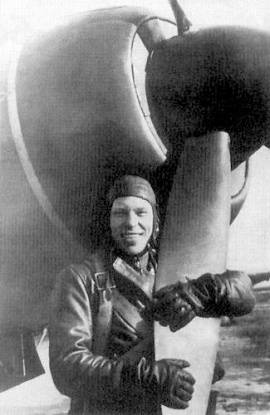 Alelukhin, a talented and courageous pilot, quickly made a career in the regiment. He became a flight commander, then - the commander of an air squadron and deputy commander of a fighter aviation regiment. On December 5 of 1941, Alelukhin received the first combat award - the Order of the Red Banner for 83 sorties. On February 10 of 1942, he was awarded the Order of Lenin for 133 sorties and a downed enemy aircraft, and on July 14 - the Order of Alexander Nevsky for 37 sorties, 9 air battles and 3 personally shot down planes. 1 August 1943 Alelyukhin again received the Order of the Red Banner.
Alelukhin, a talented and courageous pilot, quickly made a career in the regiment. He became a flight commander, then - the commander of an air squadron and deputy commander of a fighter aviation regiment. On December 5 of 1941, Alelukhin received the first combat award - the Order of the Red Banner for 83 sorties. On February 10 of 1942, he was awarded the Order of Lenin for 133 sorties and a downed enemy aircraft, and on July 14 - the Order of Alexander Nevsky for 37 sorties, 9 air battles and 3 personally shot down planes. 1 August 1943 Alelyukhin again received the Order of the Red Banner. Fortune smiled at the fighter pilot. By August 1943 of the year, he made 256 sorties, personally shot down 11 enemy aircraft and shot down 6 aircraft in the group. For such an effective service of the guard, Captain Aleksey Alelyukhin on August 24 of the year 1943 was awarded the highest state award - the Golden Star of the Hero of the Soviet Union.
More than two months later, on November 1 of 1943, Alexey Alelyukhin received the second Golden Star of the Hero of the Soviet Union. By this time, he managed to carry out 410 sorties, participate in 114 air battles and shoot down 26 enemy aircraft.
The war continued and the guards captain Alelukhin, who commanded the squadron in the 9th Guards Fighter Aviation Regiment, continued to attack enemy aircraft. He liberated Donbass, Moldova, fought in the skies over Germany. On April 20 on 1945, Aleksey Alelyukhin was awarded the Order of the Red Banner for destroying 7 enemy aircraft, 15 vehicles, up to 100 enemy soldiers, 1 steam locomotive and 2 aircraft on the ground, as well as for 134 sorties and 31 air combat.
In total, during the war years Alelyukhin made an 601 sortie, participated in 258 air battles, personally shot down 40 enemy aircraft, and 17 aircraft were shot down as part of the group. He was in thirteenth place in terms of performance among the most successful Soviet military pilots of the Great Patriotic War, beating his famous colleagues Pavel Golovachev and Amet-Khan Sultan.
At the time of the end of the war, the hero pilot was only 25 years old, and behind him was the entire Great Patriotic War and more than six years of service in fighter aircraft. After defeating Germany, Alelukhin continued to serve as deputy commander of the 9 Guards Fighter Aviation Regiment as part of the Group of Soviet Forces in Germany.
From Berlin to Pyongyang
As a young and promising officer, twice Hero of the Soviet Union, Alelyukhin was sent to study at the Military Academy named after M.V. Frunze, who graduated in 1948 and was appointed deputy commander of the 151-th Guards Fighter Aviation Division in the Moscow Air Defense District. The division was located in the city of Kalinin (Tver) and carried out tasks to ensure air defense of the Moscow region.
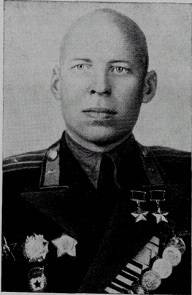
The end of the 1940's - the beginning of the 1950's. were a very difficult time from the point of view of the international situation. Enemies of the Soviet Union tried to prevent the expansion of Moscow's influence in East Asia, where there was a civil war in China, an armed confrontation unfolded in Korea.
To the aid of the Chinese and Korean communists, Moscow sent Soviet military specialists of various profiles, including pilots. They had not only to train Korean and Chinese comrades, but also to defend the sky of the friendly countries of East Asia, sometimes engaging in fights with American pilots.
Aleksey Alelyukhin as an experienced fighter pilot, and also a young one, only 30 years old, was sent as part of the division on a long mission to China. He had been in the Celestial Empire since July 1950, and in October 1950, he was transferred as deputy commander of the 151 Guards Fighter Aviation Division to Korea. In November 1950 - February 1951. Aleksey Alelyukhin was the commander of the 281 Guards Fighter Aviation Division, which solved the tasks in the Korean sky.
In December 1950, the division commanded by Alelukhin was taken back to China. Here, the pilots of the division trained pilots for the air forces of China and North Korea, and were on duty to protect the Chinese sky. Alelukhin commanded the 28 Air Division until March 1952, including after the division was withdrawn from China and transferred to the Azerbaijan SSR.
Post-war service
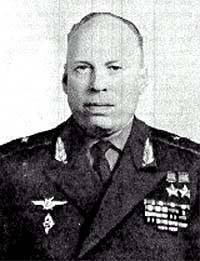 From March to November of the 1952 of the year, Aleksey Alelyukhin headed the department of the Flight Service and Air Law Directorate of the Air Force General Staff, then he studied at the Military Academy of the General Staff, which he graduated in 1954. After graduating from the academy, the officer, despite his youth, was engaged in teaching work from 1954 to 1961 - at first he served as deputy head of the department of tactics of fighter aviation and air defense, and then as deputy head of the department of methods of combat training at the Air Force Academy.
From March to November of the 1952 of the year, Aleksey Alelyukhin headed the department of the Flight Service and Air Law Directorate of the Air Force General Staff, then he studied at the Military Academy of the General Staff, which he graduated in 1954. After graduating from the academy, the officer, despite his youth, was engaged in teaching work from 1954 to 1961 - at first he served as deputy head of the department of tactics of fighter aviation and air defense, and then as deputy head of the department of methods of combat training at the Air Force Academy. In 1961, the 41-year-old Aleksey Alelyukhin returned "to the troops" - he was appointed chief of staff of the 95-th fighter aviation division of the Belarusian military district, and from August 1963 to May 1970, he was the chief of intelligence of the Air Force of the Moscow military district. From May 1970 to October 1974 Alelyukhin was deputy chief of staff of the 26 Air Force, and from October 1974 to July 1980, he served as deputy chief of staff of the Moscow Military District for aviation equipment displays.
In 1980, Alexei Vasilyevich celebrated his sixtieth birthday. He still continued to serve. In July 1980 of the year he was appointed deputy chief of staff of the Air Force of the Moscow Military District, and only in August 1985 of the year did the 65-year-old Major General of Aviation Aleksei Alelyukhin resign.
The illustrious military pilot, Aleksey Alelyukhin, devoted almost his entire conscious life, from 18 to 65 years, to military aviation. After his retirement, he lived for another five years, and on October 29 of 1990, he died in the 71 year of his life. The combat general and twice Hero of the Soviet Union were buried in the Novodevichy cemetery. In the village of Kesova Gora, Tver Region, where Alelyukhin was born, and in Borisoglebsk, where he studied at a flight school, busts of the hero were installed. His name is given to a street and a school in his native village.
- P P 'SЊSЏ RџRѕR "RѕRЅSЃRєRёR№
- airaces.narod.ru
Information